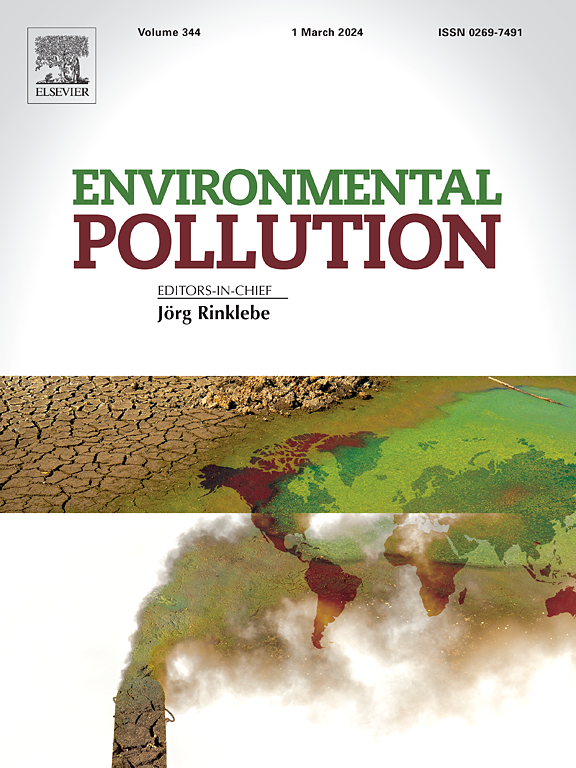Human exposure to polycyclic aromatic hydrocarbons during structure fires: Concentrations outside and inside self-contained breathing apparatus and in vitro respiratory toxicity
IF 7.6
2区 环境科学与生态学
Q1 ENVIRONMENTAL SCIENCES
引用次数: 0
Abstract
Structure fires release several health-hazardous compounds, including polycyclic aromatic hydrocarbons (PAHs), and the use of self-contained breathing apparatus (SCBA) is mandatory to protect firefighters’ airways. The characterization of PAHs released during structure fires is scarce, principally in European countries. This work elucidates the mechanisms of toxic effects associated with human exposure to PAHs released during structure fires, by assessing for the first time, the levels in the breathable air of sapper firefighters with and without the use of SCBA. An in vitro co-culture model of air-blood barrier was used to evaluate respiratory toxicity. Concentrations of total PAHs (∑PAHs) inside the burning structure were 8.20–19.8 times higher than the values monitored inside fire stations (11.5–28.0 μg/m3 versus 1.41 μg/m3; p < 0.005) and 2688–5872 times higher than the levels detected inside the SCBA used during the fire events. Levels of carcinogenic PAHs were 6.90–20.5 times higher than observed for the control group (p ≤ 0.005). Inside to outside ratios (<1) suggested the contribution of PAHs from fires to the levels detected inside the protection system. Exposure to fire emissions increased the risk of lung cancer. The use of SCBA system substantially reduced exposure to PAHs, still levels detected outside/inside the SCBA facemask significantly reduced the viability of alveolar and bronchial cell lines (<70 %). Benzo(a)pyrene (100 %), naphthalene and phenanthrene (97.5 %), benzo(b+j)fluoranthene (90 %), and fluorene (87.5 %) found inside the SCBA mask were able to permeate the co-culture model of air-blood barrier. More studies need to corroborate these preliminary findings and evaluate the synergic effect of fire effluent complex mixtures and their contribution to respiratory toxicity.


求助全文
约1分钟内获得全文
求助全文
来源期刊

Environmental Pollution
环境科学-环境科学
CiteScore
16.00
自引率
6.70%
发文量
2082
审稿时长
2.9 months
期刊介绍:
Environmental Pollution is an international peer-reviewed journal that publishes high-quality research papers and review articles covering all aspects of environmental pollution and its impacts on ecosystems and human health.
Subject areas include, but are not limited to:
• Sources and occurrences of pollutants that are clearly defined and measured in environmental compartments, food and food-related items, and human bodies;
• Interlinks between contaminant exposure and biological, ecological, and human health effects, including those of climate change;
• Contaminants of emerging concerns (including but not limited to antibiotic resistant microorganisms or genes, microplastics/nanoplastics, electronic wastes, light, and noise) and/or their biological, ecological, or human health effects;
• Laboratory and field studies on the remediation/mitigation of environmental pollution via new techniques and with clear links to biological, ecological, or human health effects;
• Modeling of pollution processes, patterns, or trends that is of clear environmental and/or human health interest;
• New techniques that measure and examine environmental occurrences, transport, behavior, and effects of pollutants within the environment or the laboratory, provided that they can be clearly used to address problems within regional or global environmental compartments.
 求助内容:
求助内容: 应助结果提醒方式:
应助结果提醒方式:


